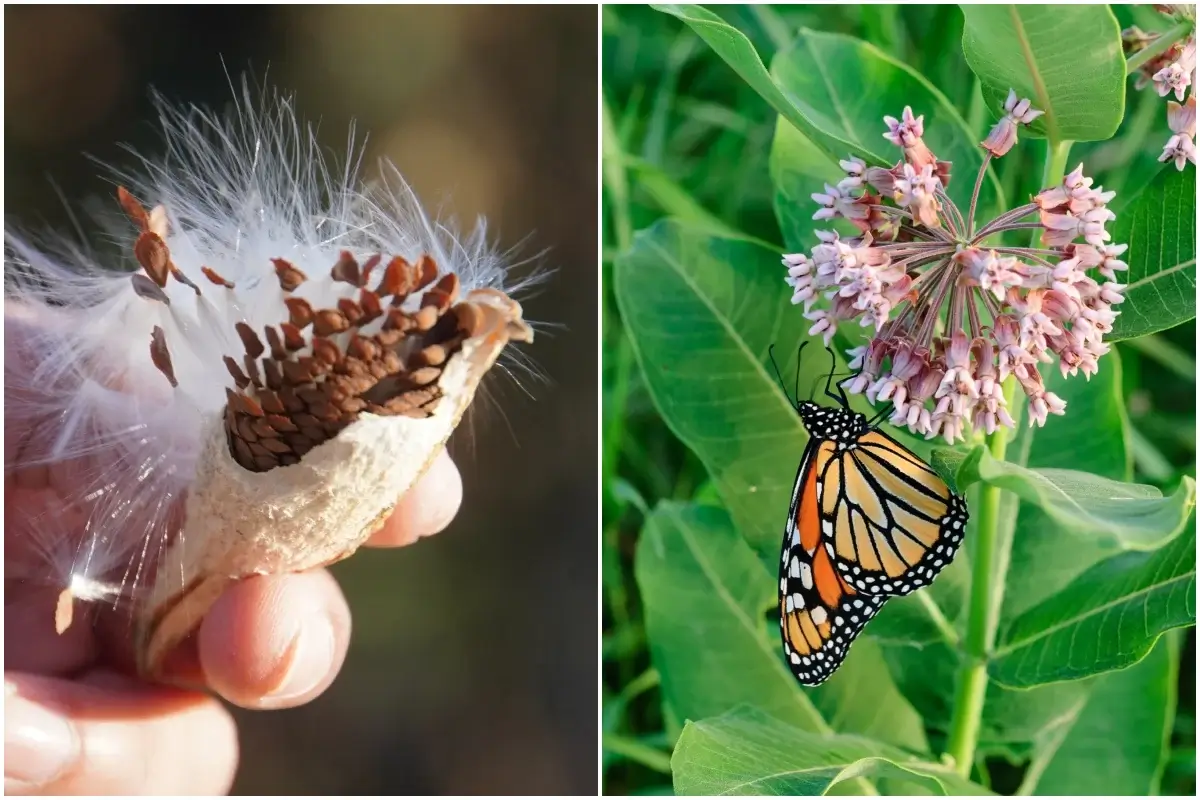You’ve probably heard that Monarch butterflies depend on milkweed — and it’s true. These graceful insects can only lay their eggs and feed their caterpillars on this vital plant. Unfortunately, milkweed has been disappearing from fields and roadsides, putting Monarchs in serious danger.
The great news? You can help right from your own garden! With just a few milkweed plants, you can provide food and shelter for butterflies and other pollinators.
Why Milkweed Is So Important
For decades, people treated milkweed as a nuisance, spraying and removing it from lawns and farmlands. Only recently have we realized that without milkweed, Monarchs can’t survive.
The main reasons milkweed has declined include:
- Industrial agriculture – Large-scale crop farming leaves little room for wild plants.
- Herbicides – Glyphosate and similar weed killers destroy milkweed in fields and ditches.
- Urban growth – Expanding towns and highways replace natural habitats.
When milkweed disappears, Monarch caterpillars lose their only food source — and butterfly numbers drop dramatically.
More Than Just a Butterfly Plant
Milkweed isn’t just for Monarchs! The plant’s flowers are rich in nectar and attract all kinds of beneficial insects:
- Native bees and honeybees
- Other butterflies and moths
- Ladybugs and predatory wasps that help control pests
By growing milkweed, you’ll be creating a small but powerful ecosystem that supports your entire garden.
Choosing the Right Type of Milkweed
Not all milkweed species are suitable for every region, so it’s important to plant native varieties that naturally thrive where you live.
Here are two popular choices:
- Common Milkweed (Asclepias syriaca) – Hardy and fragrant, perfect for most climates.
- Butterfly Weed (Asclepias tuberosa) – Compact and colorful, great for flower borders.
With over 70 native milkweed species in North America, check with your local nursery or extension office to find the best fit for your area.
Where to Get Milkweed Seeds
You can buy milkweed seeds online from reputable companies like Baker Creek, Park Seed, or Hudson Valley Seed Co.
However, the best (and most rewarding) option is to collect your own seeds in the fall. It’s easy, fun, and free.
How to Harvest and Store Milkweed Seeds
Follow these simple steps to collect your own seeds:
- Wait for fall. Seed pods are ready when they turn brown and begin to split open naturally.
- Inspect the seeds. Mature seeds are dark brown — light ones aren’t ready yet.
- Protect your skin. The milky sap can irritate, so wear gloves.
- Dry them out. Place seeds in a paper bag and leave them in a dry place for several days.
- Store safely. Once dry, keep them in a sealed container in your refrigerator until spring.
If you’d like, you can remove the silky fluff (coma) by shaking the seeds in a paper bag with a few coins. But leaving it attached is fine too — it won’t affect germination.
Don’t Skip Cold Stratification
Milkweed seeds need a period of cold before they’ll sprout — a natural winter rest called cold stratification.
You have two options:
- Natural method: Sow seeds outdoors in late fall so they get chilled over winter.
- Fridge method: Wrap seeds in a damp paper towel, seal in a plastic bag, and refrigerate for 4–6 weeks before planting.
This simple step mimics nature and helps ensure strong, healthy seedlings.
Planting and Growing Milkweed
When it’s time to plant:
- Pick a sunny spot. Milkweed loves full sun.
- Prepare the soil. It thrives in well-drained soil, even if it’s sandy or rocky.
- Plant shallowly. Press seeds just under the surface — they need light to sprout.
- Water carefully. Keep the soil moist until seedlings appear.
Once established, milkweed is drought-tolerant and returns year after year with little maintenance.
Fun Idea: Make Your Own Seed Bombs
Want to spread more milkweed? Try making seed bombs!
Mix together:
- 1 part milkweed seeds
- 3 parts compost
- 5 parts clay powder or wet soil
Form small balls, let them dry, and toss them in open sunny areas like empty lots or roadside edges. When it rains, the seeds will take root — a simple way to restore habitat.
More Reasons to Love Milkweed
Beyond helping Monarchs, milkweed brings beauty and diversity to your garden. Some types have fragrant flowers and eye-catching seed pods that look stunning even in winter.
Bonus: certain species of milkweed are edible when properly cooked (always research before trying).
Help Bring Back the Monarchs
Every milkweed plant you grow gives Monarch butterflies a better chance to survive. You don’t need acres of land — just a patch of soil and a little care.
Your effort can:
- Support pollinators
- Beautify your garden
- Contribute to restoring nature
Call to Action
👉 Start your milkweed garden today!
Find a sunny corner, plant a few seeds, and share this guide with friends or neighbors who love gardening. Together, you can help save Monarch butterflies and create a more vibrant, living landscape — one milkweed at a time.
